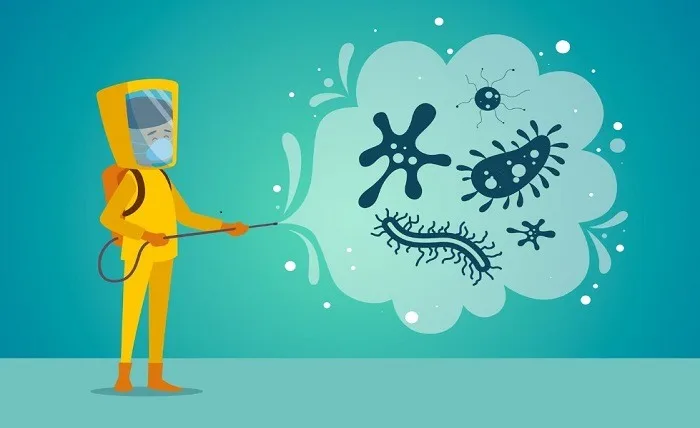Tired of those pesky mites causing havoc? Discover effective and eco-friendly ways to bid farewell to these unwelcome guests. We have covered you, from DIY solutions that fit your busy life to understanding why mite control matters for your well-being and surroundings. Unveil the secrets to a mite-free environment and reclaim your comfort today. Say goodbye to itchy inconveniences and embrace a healthier, happier space. Let’s dive into the world of mites and explore how to get rid of mites and why it’s a step toward a better quality of life.
What Are Mites?
Mites are tiny arthropods belonging to the class Arachnida, which is the same class that includes spiders and ticks. They are incredibly diverse and can be found in various habitats, including soil, water, plants, and animals. Mites are characterized by their small size, typically ranging from 0.2 to 1.5 millimeters in length, although some species can be larger.
The Potential Problems They Pose
Mites, tiny arachnids with diverse habitats, can create various potential problems. In agriculture, spider mites and sap-sucking tendencies damage crops, causing economic losses. Dust mites, prevalent indoors, trigger allergies and respiratory issues through their microscopic excrement. Mange mites affect animals, leading to skin irritations and infections. Some mites, like ticks, act as disease vectors, transmitting illnesses such as Lyme disease.
Ecosystem balance can be disrupted as mite populations grow unchecked, impacting other species. Varroa mites jeopardize honeybee colonies, affecting pollination and agriculture. Mites in stored food products lead to contamination and losses. Understanding these issues is crucial for effective pest management, ecological health, and human well-being.
Identifying Common Types of Mites
Identifying common types of mites involves recognizing distinct characteristics and habitats. Some notable varieties include:
- Spider Mites: These tiny arachnids are red, green, or brown and are often found on plants. They cause stippled leaves and fine webbing.
- Dust Mites: Microscopic and found indoors, they thrive in humid environments. They trigger allergies and asthma, often found in bedding, upholstered furniture, and carpets.
- Scabies Mites: Parasitic mites that burrow into human skin, causing intense itching and redness. They commonly infest skin folds.
- Chigger Mites: These larvae attach to the skin, causing severe itching and welts. They are typically encountered in grassy areas.
- Bird Mites: Often found near bird nests, they can bite humans and cause skin irritation.
- Clover Mites: Tiny red mites that can invade homes, often seen crawling on windowsills.
- Varroa Mites: Threat to honeybees; they attach to bees and weaken colonies, leading to significant hive losses.
- Demodex Mites: Live in hair follicles and sebaceous glands of mammals, including humans. They can contribute to skin conditions.
- House Dust Mites: Common indoor pests feed on dead skin cells and thrive in bedding, upholstered furniture, and carpets.
- Rodent Mites: Parasitize rodents and can bite humans when their host dies or abandons a nest.
Identifying these mites is crucial for effective control measures and addressing associated problems. Sterifab is an EPA-registered disinfectant and insecticide that is often used for controlling pests like bedbugs, lice, fleas, ticks, and other insects. It is known for its quick-drying and nonresidual nature, meaning it doesn’t leave behind long-lasting chemical residues after application. This can be particularly useful when treating an area without leaving a lingering chemical presence.
The Importance of Getting Rid of Mites
Removing mites is paramount due to their negative implications on human health, agriculture, ecosystems, and overall well-being. Here’s why eliminating mites is crucial:
Preventing Health Issues
Eliminating mites is essential to prevent allergic reactions, skin problems, and the spread of diseases. Proper mite control can significantly improve indoor air quality and overall well-being.
Protecting Plants and Crops
Removing mites in agriculture is crucial to prevent substantial crop damage and ensure a healthy harvest. Timely intervention can save both money and resources.
Agricultural and Economic Impact:
Crop-damaging mites, like spider mites, can devastate agricultural yields, leading to financial losses for farmers and impacting food production. Effective mite control safeguards food security and the economy.
Ecosystem Balance:
Unchecked mite populations can disrupt the balance of ecosystems. Beneficial insects and animals can suffer, leading to cascading effects throughout the food chain and potentially harming biodiversity.
Effective Methods for Mite Eradication
Effective methods for mite eradication involve a combination of preventive measures, biological controls, and targeted interventions. Here are some approaches to successfully managing mite infestations:
Maintaining Cleanliness
Regular cleaning and vacuuming can significantly reduce dust mite populations indoors. Washing bedding, curtains, and stuffed animals in hot water can help eliminate these pests.
Natural Predators
Introducing natural predators like ladybugs or predatory mites can help control spider mite infestations in gardens without resorting to chemical pesticides.
Medications and Treatments
For scabies mites, topical creams and medications prescribed by a healthcare professional are necessary to eliminate the infestation and alleviate symptoms.
DIY Mite Control: What You Can Do
DIY mite control offers practical methods to manage and prevent infestations in various settings. Here’s what you can do to control mites on your own effectively:
Essential Oils
Essential oils like tea tree and neem oil have shown promise in repelling and controlling mites. Diluted solutions can be used as sprays or added to cleaning solutions.
Diatomaceous Earth
This natural powder is effective against many types of mites. It works by damaging their exoskeletons, leading to dehydration and death. Sprinkle it in areas where mites are suspected.
Proper Hygiene Practices
Regular bathing, washing clothes, and cleaning living spaces can go a long way in preventing mite infestations and their associated problems.
FAQs
- How do I know if I have a dust mite allergy?
Common dust mite allergy symptoms include sneezing, runny nose, itchy or watery eyes, and skin rashes. Consult a healthcare professional for proper diagnosis and treatment.
- Can mites infest outdoor plants only?
No, certain mite species can infest both indoor and outdoor plants. It’s important to inspect and treat plants to prevent infestations regularly.
- Is professional pest control necessary for mite eradication?
Professional pest control services may be necessary to effectively and safely eradicate severe infestations or specific cases like scabies.
Wrapping Up
Mites may be small but can significantly impact our health and surroundings. Taking proactive measures to eliminate mites is essential for safeguarding our well-being and the health of our plants and crops. By following the methods outlined in this article, you can effectively manage mite populations and enjoy a healthier and more comfortable living environment


